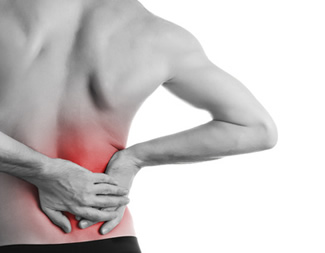
Summarization of a Physical Therapy Journal article:
“Exercise for Prevention of Recurrences of Nonspecific low back pain”
By Eric Klemm 9/2/13
The Physical Therapy Journal (PTJ) produced a summary of 13 Cochrane Library research articles showing the effects of exercise on recurrent low back pain (LBP). In addition, the PTJ used their own study of a patient suffering from recurrent LBP to compare their results with the other 13 Cochrane research articles.
What is recurrent LBP? Recurrent LBP is LBP that has resurfaced or returned following the original incident of LPB. For example, The original back pain became completely better and then, reoccurred again later at another time. Exercise therapy has been proven to be effective in treating an original incidence of LBP. Now emphasis is being placed on determining whether it can permanently prevent or reduce the frequency of future recurrences of the pain.
A combination of two groups of people were studied in the 13 research articles. The first group consisted of people who had new LBP and were trying to prevent it from returning. The second group consisted of people who had completely recovered from a previous/original incidence of low back pain but later experienced a resurfacing of that pain. These 2 groups of people were then grouped into exercise and non-exercise groups. The non-exercisers had approximately a 65% recurrence in LBP, and the exercisers had an approximate 32% recurrence in LBP. This shows that the exercises were more effective at preventing a future episode of LBP. Previously, studies have only been used to show the effectiveness of exercise therapy for an original episode of LBP; not it’s effect/role in the prevention of a future recurrence of that LBP.
In comparison to the previous Cochrane Library reach article findings, the findings of a patient (referred to as “Ms B”) with similar low back pain symptoms were studied. Ms B had LBP for 7 years following an incident where she tried to swing a large brief case over her shoulder. Her pain traveled down the right side of her back and into her right buttock. The pain ranged from a 3-5 out of 10. Initially, Ms B was successfully treated by 3 visits of spinal manipulation. Following the initial recovery Ms B was given a structured exercise program to follow in order to prevent a future recurrence of LBP and to decrease pain in the event of a recurrence.
Exercises used in the 13 article studies were similar to those used in the prevention of recurrent LBP in Ms B. Examples of these include abdominal side planks (holding the body up off the ground in a sideways position for a sustained period of time), standing hip hike (while standing on a step with one leg on the step and the other hanging off, the hanging leg is allowed to drop below the step, then brought back up to the level of the other foot on the step) and a 4-point-kneeling/hands and knees position (various exercises can be performed here. In this instance a cat/back arching and cow/back relaxing technique was used). Following a consistent performance of specific exercises designed to meet the needs of Ms B’s LBP, she reported no additional recurrences of LBP over the course of the year.
According to the PTJ, the evidence of the 13 research articles and the case study of the patient, “Ms B”, show that exercise intervention is “likely” to reduce the number of recurrent LBP incidences. More testing is necessary to confirm the consistency of this finding, however some of the tests performed demonstrate that “exercise” is better than “no exercise” for eliminating recurrent episodes of LBP.
Exercise for Prevention of Recurrences of Nonspecific Low Back Pain
PHYS THER. Published online June 27, 2013
G. Maher Luciana Gazzi Macedo, Geoff P. Bostick and Christopherg
